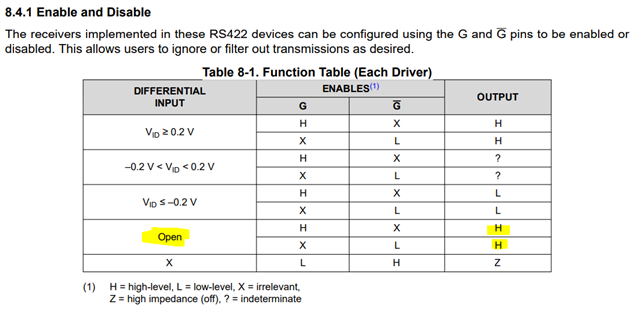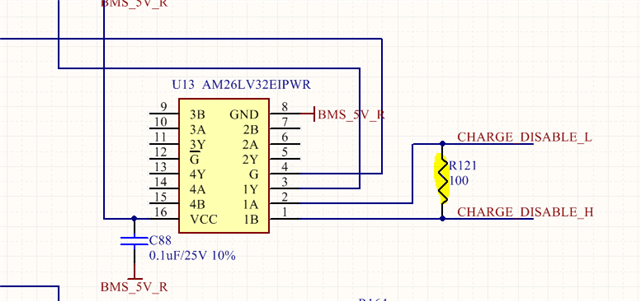Other Parts Discussed in Thread: AM26LV32
Tool/software:
To whom it may concern:
We have a circuit with this IC as a differential signal command receiver, and we would like to keep the output high when input open (G always high). Based on the IC spec, it should have "Fail-safe" feature, and the output should be high when open:
"Removing the uncertainty of random output states, modern transceiver designs include internal biasing circuits that put the receiver output into a defined state (typically high) in the absence of a valid input signal. "

We build two rounds of samples with this AM26LV32E IC, and the first round was all good, but the second round with different batch of ICs showed different result. All these ICs were purchased from the same qualified distributor. Could you help to confirm:
If input is "OPEN", but with 100ohm termination resistors, the output should be high? Termination resistor is normally required for RS422 design.

Thank you very much!
Chen


